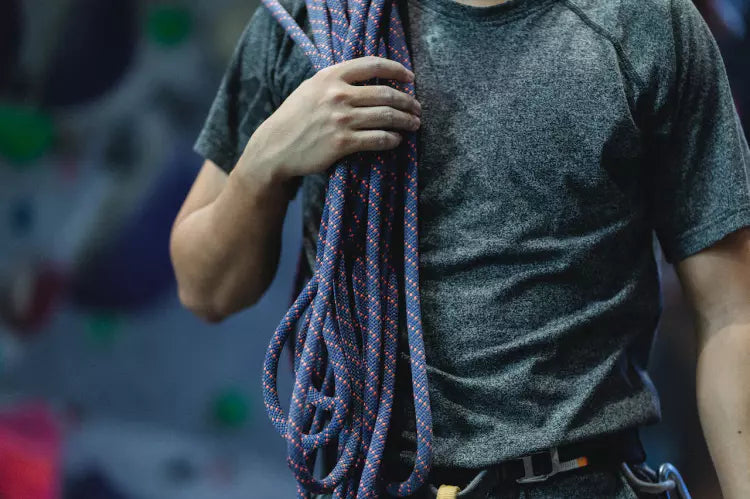
How To Care For Your Climbing Rope
Climbing ropes are precious. They are your lifeline, so they should be the most cared-for piece of climbing equipment you own. They also are not cheap, so you must keep them in pristine shape so they can save your life and so you can save some money!
First and foremost, having good rope management skills is the key to prolonging the lifespan. Good rope management skills include properly uncoiling your rope when it’s brand new, being careful of rope drag on routes, and making a point not to step on it when it’s on the ground—additionally, flaking your rope frequently to get out coils and recoiling at the end of each climbing session. Rope management is the first and most important step in caring for your rope.

Clean Rope?
So your rope is brand new and beautiful. What can you do to ensure it stays as clean as possible for as long? The first step is rope management. But you can use a few other strategies to keep your rope looking like it came straight from the store.
Tarps are Your Besties
Get a rope tarp. Many rope bags have a rope tarp attached, but if yours didn’t, get a tarp. Don’t be that climber at the crag who plops their rope directly on the dirt, dragging it to and fro while adjusting your belaying position. If you aren’t up for purchasing a tarp for your rope, you can use a jacket, the rope bag itself, or essentially anything to keep it directly off the ground. If you do not use a rope tarp, it’s almost guaranteed your rope’s life will be bitter and short.
Getting dirt on your rope when climbing outside regularly is inevitable, but do the best you can to keep your cord on the tarp at all times, and it will go a long way.
Chalk: Secretly Evil
Beware of chalk. It’s sneaky. The chalk acts as dirt and will cause a quick progression of dirtiness and a short lifespan to your rope. Like dirt, you’ll inevitably get chalk on your rope. But bringing awareness to where you are chalking up and where the chalk is falling will preserve your rope’s life.
That includes your climbing buddies too. If you and your climbing partner are using your rope, don’t be afraid to educate them on your rope management strategies and prevention tactics for keeping your rope clean.
Dirty Rope?
If you’ve made it down here, your rope must already be a different color than when you first purchased it. It probably turns your fingers black when you touch it, too. But don’t be embarrassed. It happens to everyone. The best solution is to invest some time in cleaning it. Before diving into the best practice for cleaning your rope, there are a few things to note. Never, ever use any detergents or bleaches. These will introduce harsh chemicals and can damage your rope. Also, putting your rope in the washing machine is not recommended.

How to Clean Your Rope
The best practice for cleaning your rope is to bathe it. Yes, like it’s your child. Fill the tub with warm water, and submerge your rope. Wash it from one end to the other with mild soap. Any mild soap will do, as long as it doesn’t have any harmful chemicals. If you are not confident choosing a soap that will be safe for your rope, a few companies make rope-specific soap. That is an excellent option since it’s designed explicitly for ropes! Once the dirt comes off floating around in the bath water, remove your rope from the tub and lay it dry on a towel. It might take a while to dry, so be patient!
Lastly, we have a pro tip for you: If you have difficulty recognizing the importance of your rope, try naming it! Naming your rope will etch an emotional attachment between the two of you, and then you’ll have to care for it properly. You may leave some random equipment at the bottom of your damp climbing bag, but you sure wouldn’t do that to Knotasha or Ropeo!

























